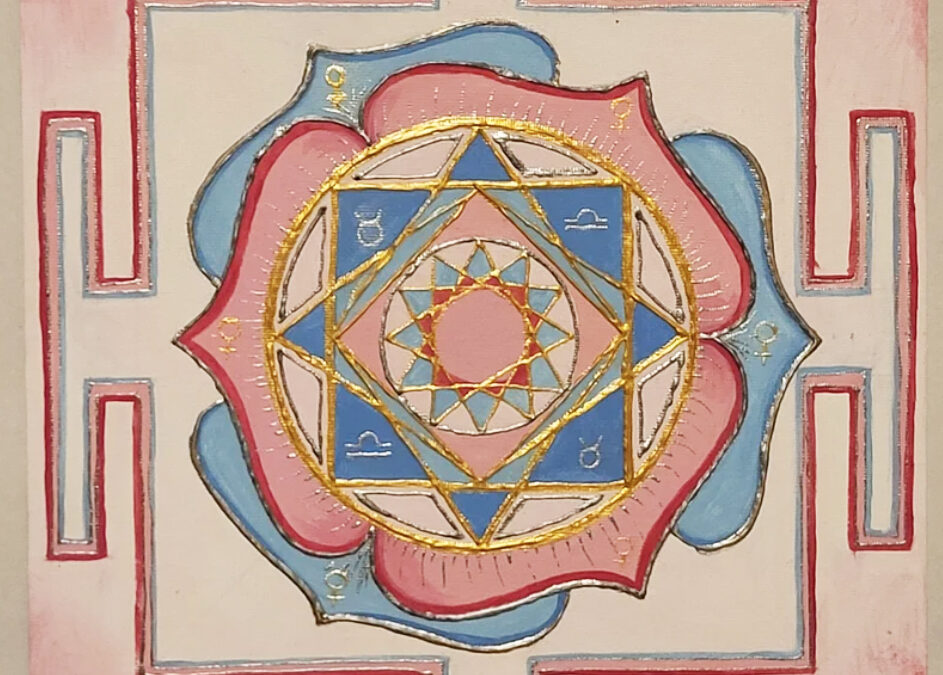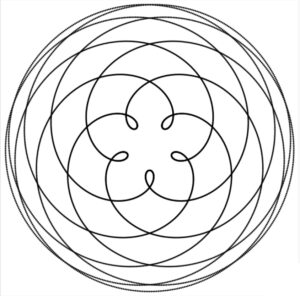• by Dawn King • Before the age of industrialization—the late 1800s—all of humankind looked to the skies as their calendar. Today, there are cultures that still rely on observations of sunrise, sunset, moon, stars and planets to set their sacred dates. Even now, observing the Sun, we change our clocks based on the equinoxes, and celebrate mid summer at the longest day of the year.
We may mostly ignore the sky today, but stardust is in our DNA. Our bodies are in constant flux with the lunar cycles that move the tides on our planet. The more aware we become, the more we realize that our Earth is alive and evolving, ever-changing.
Now to Venus. As it appears and disappears in our skies, Venus has been an important planet in the culture of many ancient and current peoples including Australian, Mayan, Roman, Egyptian, Aztec, Vedic (India), Hopi (and other Native Americans), Arab, and Chinese—so pretty much every culture. It appears very bright to us because the clouds of Venus reflect sunlight.
For 90 days Venus regularly appears on Earth as the so-called “evening star;” then it disappears for a number of days, only to reappear as Earth’s “morning star” for about 90 days. This all takes place over approximately 18 months. Why does this appear to happen from our vantage point?
Venus orbits between the Earth and the Sun. Sometimes it disappears on the far side of the Sun, and sometimes it is between us and the Sun in a way that we cannot see it. It’s orbit is quite different from Earth’s in length. Venus orbits the Sun about 13 times for every 8 orbits of the Earth. If we make a diagram of this movement with Earth in the center, it appears as a sort of pentagram or flower, reminding us of the mystical patterns of sacred geometry, and life. Here’s the diagram.
This week, Venus is as close to Earth as it ever gets and a rare view of Venus took place. It was observed both in the evening, and then the morning as a thin crescent. This was the first day of Venus becoming the “morning star” once again (March 23rd).
If a new Venus cycle wasn’t enough, we are also having a solar eclipse this weekend. Venus is restarting it’s beautiful spiraling design, the Moon will eclipse the Sun, and 7 planets will be visible in Pisces all at once. Maybe the night sky is trying to tell us something.
One of these planets is Saturn, sometimes called the “Lord of Karma” It remains in a sign for about 36 months. All of these events are concurrent set points—they mark the end and the start of eras or human attitudes and experiences.
Because we currently celebrate Spring and the start of Aries as the beginning of a new astrological and weather year, Pisces happens to be the final sign of the 12 sign zodiac on the ecliptic we see in our night sky. This makes all of this weekend’s events even more significant. We are all entering a new era of new opportunities and experiences.
As my friend James Kelleher states: “Meditation, reflection, and spiritual discipline will be essential tools for navigating this period. Saturn in Pisces reminds us that life is impermanent, and change is inevitable. By seeking the unchanging essence within, individuals can cultivate resilience and a sense of inner peace that remains untouched by political, environmental, or societal upheavals.”
Let me know if you want to read more about our amazing solar system. dwn.king1@gmail.com


